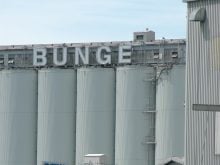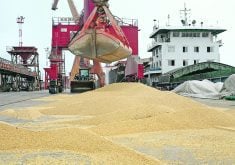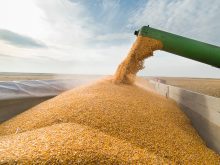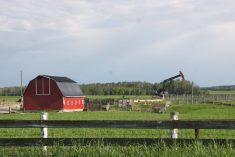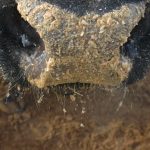Fed prices rise
Fed cattle sales improved for the first time in 11 weeks with the steer average up 30 cents per hundredweight from the previous week and the heifer average up $1.70.
Canfax said volumes also seemed to stabilize.
The good news came from the bigger kill that almost hit 60,000 head.
The effect of the competitive bid/set-aside program is still hard to determine but it appears there has been a good pick-up of set-aside cattle, more than 15,000 head during the week.
Alberta prices July 31 were steers $29.25-$34, flat rail $60-$64.10 and heifers $33.25-$35, flat rail $63.50.
Read Also
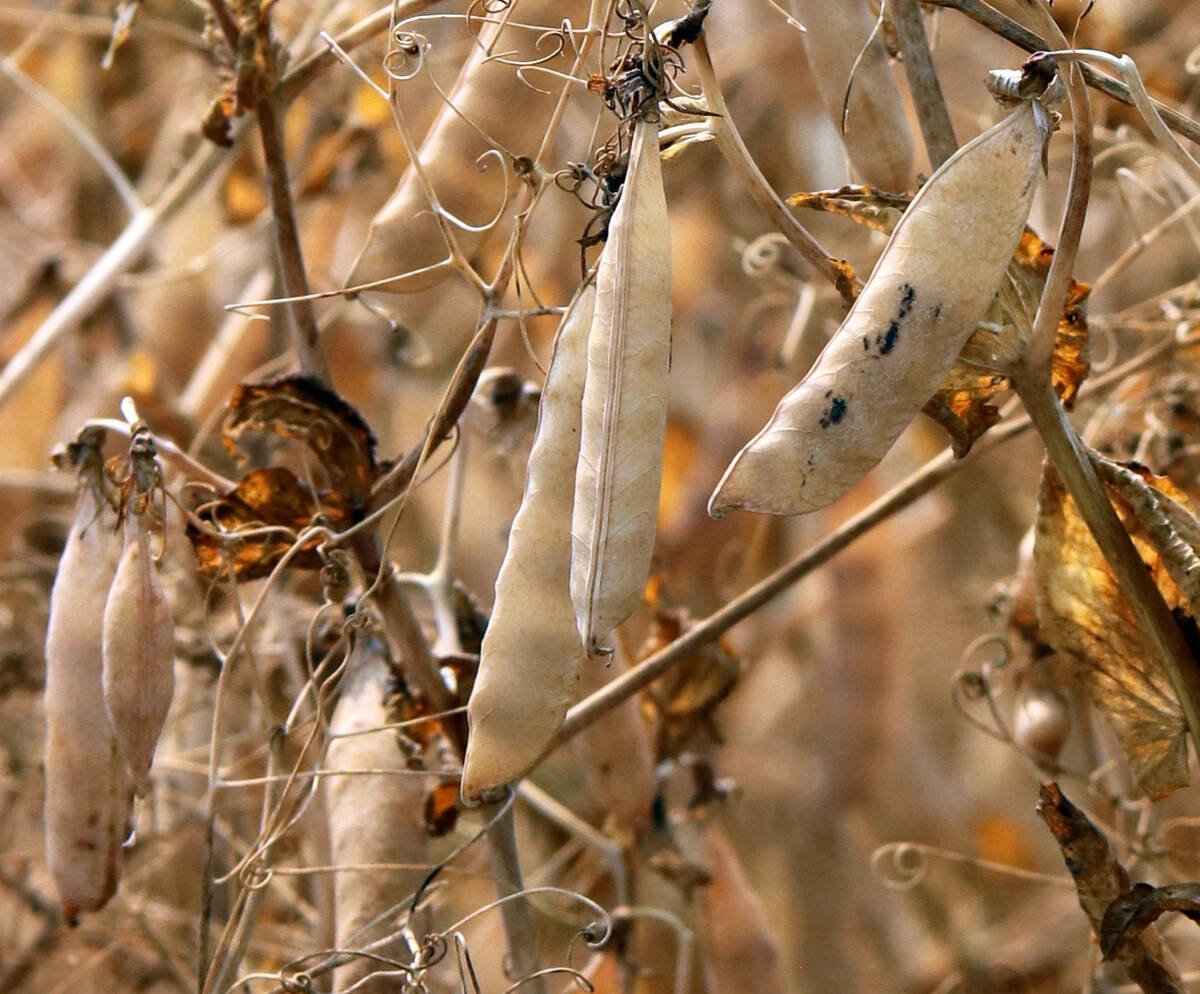
Trump’s tariffs take their toll on U.S. producers
U.S. farmers say Trump’s tariffs have been devastating for growers in that country.
In the wholesale beef trade, there are more beef features of the end cuts and grind. Packers report products are moving well, likely due to low prices, with little being backed-up in the system.
Larger kills should help address reports of products running low in supply at the retail and food service levels, Canfax said. Consumers continue to come to the rescue of the industry by increasing their consumption of Canadian beef.
U.S. markets saw another fantastic week for cattle and beef prices. The U.S. cut-out gained $5-$6.50 US per cwt. as beef prices had to catch up with the significantly higher cash cattle prices. American cut-outs are now 24 percent higher than they were a year ago.
Canfax said it would have a better feel for the impact of the new assistance program this week but forecasted prices would be steady.
Feeder prices fall
Alberta auction market volumes increased last week with slightly more than 5,500 head sold. That is 82 percent higher than the week before, but 83 percent lower than a year ago.
Feeder cattle prices were generally lower. Steers 600-900 lb. traded $2-$7 per cwt. lower, $13.50-$17.50 lower than a year ago. Heifers 600-900 lb. traded $3.00-$11 lower than the week before and $13.75-$17.50 lower than a year ago. Steers and heifers heavier than 900 lb. were $1.50-$3.25 lower. D1, 2 cows were $8.50 lower than the previous week on average.
Canfax said feeder prices would see more pressure as volumes increase at Alberta auction markets, unless border opening news becomes a factor.
Some areas are reporting dry pasture conditions due to the extreme heat. Grasshoppers are becoming a problem.
Bred cows traded between $700-$1,200. Cow-calf pairs traded at $650-$1,200 with most sales at $875.
Cattle backing up
By Sept. 30, Canfax expects about 210,000 fed cattle that should have been marketed will still be around.
Of that, about 50,000 are in finishing feedlots but the remainders, 160,000 head, have not been accounted for in the typical cattle-on-feed numbers.
They may be in backgrounding lots now being fed to finish or could be out on grass.
By the end of the year that backlog is expected to increase to slightly more than 250,000 head, most of which have not been placed in feedlots yet.
Carrying the same theory forward into the end of the first quarter of 2004, which should encompass most of the 2003 yearling run, the backlog grows to 343,000 head of potential fed cattle, said Canfax.
Due to limited slaughter, the cow and bull backlog is growing more quickly than fed cattle.
At the end of the third quarter, the cow and bull backlog will be similar to the fed situation at 210,000 head. But as runs typically pick up into the fourth quarter, the backlog by the end of the year is expected to be near 375,000 head and through to the end of March 2004, about 560,000 head.
Combining fed and nonfed totals, Canfax sees 420,000 head carryover as of Sept. 30, increasing to 626,000 head by the end of the year.
Pork drops
Wholesale prices for almost all primal pork cuts continued to decline in the U.S., lowering the pork cut-out value by more than $1 US per cwt. over the week, said Manitoba Agriculture.
Although the seasonal price decline has occurred earlier than during any of the past three years, the pork cut-out value and average hog price in July were still about 12 percent higher than in July 2002.
Tighter margins led packers to pay about one to two percent less for hogs last week.
The Iowa-Minnesota daily direct hog price (plant mean, 51-52 percent, lean carcass converted to live weight) declined from $45.64 per cwt. on July 29 to $44.82 on July 31.
Hog futures prices also declined.
Manitoba hog slaughter declined by about 2,000 head from early July to 72,200 head two weeks ago.
With the Springhill Farms plant closed, slaughter was expected to drop to 67,000 head last week.
This projected hog kill is about 24 percent below the same week in 2002 and is 34 percent below the record 102,000 hogs killed in Manitoba during the week ended Nov. 8, 2002, when all plants were operating at full, one-shift capacity.
Ron Plain, livestock market analyst with the University of Missouri said in his weekly report that U.S. slaughter weights continue to run well above last year.
Barrow and gilt carcass weights for the week ending July 19 were two lb. heavier than last year and live weights for barrows and gilts for the week ending July 26 were up 2.9 lb. from the same week last year.
He said the data suggests the probabilities are high that marketings have been delayed this summer.
Plain also noted one reason for lacklustre hog prices this summer is the relatively weak demand for pork at the consumer level.
Based on preliminary data, demand for pork at the U.S. consumer level for January-June was down between three and four percent.
Lambs lower
Ontario Stockyards traded 2,317 sheep and lambs and 326 goats last week.
Quality grain-fed lambs traded $10 to $15 lower, while poor quality, unfinished lambs sold under extreme pressure. Sheep and goats held steady. Due to new subsidy regulations, the plainer and feeder lambs sold with little demand.




